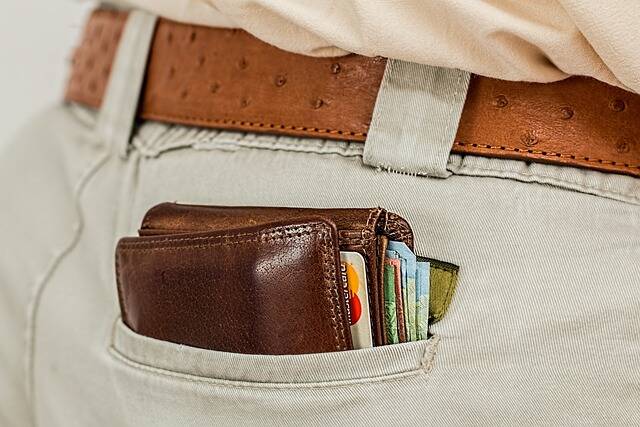This question is answered by the Norwegian Statistical Office. In 2022, Norway was the fifth most expensive country in Europe when looking at household consumer price levels. Despite the high price level, Norwegians had the second highest level of consumption in Europe.
Also read: We visit Norway - Besseggen is now a National Tourist Route
According to preliminary data from the European Purchasing Power Survey (ec.europa.eu/eurostat), in 2022 the level prices in Norway was 43 percent higher than the average for the 27 EU Member States.
This is actually a slight decrease compared to the previous year, when we had the third highest price level.
In Iceland, the price level was 59 percent higher than the EU average. However, the most expensive was in the country to which wealthy Norwegians have been going en masse recently - in Switzerland. There, prices were as much as 74 percent higher than the EU average. Ireland and Denmark had a price level similar to Norway and were the most expensive countries in the EU. Then there is Luxembourg and our Nordic neighbors Finland and Sweden.
The areas with the lowest price levels for private households are Turkey and many countries in the Balkan Peninsula, where the price level in 2022 was around half the EU average.
Electricity was record expensive in 2022
Jeśli spojrzymy na poszczególne grupy towarów i usług, to bez zaskoczenia “alkohol i tytoń” były tymi, gdzie norweski poziom cen był najwyższy, aż o 135 procent powyżej średniej UE. Jednak było to tylko nieznacznie wyższe niż na Islandii i w Irlandii.
Electricity was record-breakingly expensive in our country in 2022. However, energy products were the only individual product group whose level prices in Norway was lower than in the EU. This is due, among other things, to the fact that many European countries use gas as a heating source. Switzerland was the most expensive for food and drink, both in shops and restaurants, and for clothing.
Jeśli porównamy poziomy cen w Norwegii, Szwecji i Danii, zauważymy, że wszystkie trzy kraje miały ceny powyżej średniej UE dla wszystkich dziewięciu przedstawionych grup konsumpcyjnych, ale tylko dla “alkoholu i tytoniu”, “mieszkań, oświetlenia i paliw” oraz “usług pocztowych i telekomunikacyjnych” różnice były szczególnie duże.
Even though Norway has one of the highest price levels in Europe, we are still at the forefront when it comes to personal consumption per capita. Price-adjusted consumer spending in Norway was 26 percent higher than the EU average in 2022, unchanged from the previous year. Compared to Denmark and Sweden, consumption in these countries was around 10 percent above average.
The most relatively costly country was Switzerland, where spending was 17 percent higher than average. The Balkan countries were also at the bottom of the list, with Albania at the bottom of the list. In Turkey, where the lowest price level was recorded, spending has increased significantly in recent years and in 2022 it was 80 percent of the EU average.
Jeśli spojrzymy na poszczególne obszary, nasze względne wydatki były najwyższe w głównych grupach “ubrania i obuwie”, “transport”, “meble itp.” oraz “kultura i rekreacja”. Tutaj przekraczaliśmy średnią UE o ponad 50 procent. Dla większości grup mieliśmy również wyższe wydatki niż nasi sąsiedzi w Szwecji i Danii. Dla trzech grup konsumpcji, “alkohol i tytoń”, “usługi pocztowe i telekomunikacyjne” oraz “hotele i restauracje”, nasze wydatki były poniżej średniej UE.
Norwegian GDP is more than twice as high as in EU countries
Europejskie badanie siły nabywczej jest również używane do przeliczania krajowych produktów krajowych brutto (PKB) na porównywalne dane. PKB jest miarą ogólnej aktywności gospodarczej w danym kraju. W 2022 roku skorygowany o poziom cen PKB per capita w Norwegii po raz pierwszy przekroczył dwukrotnie średnią dla UE. Norwegia nadal zajmuje “tylko” trzecie miejsce, ale wyraźnie zmniejsza dystans do Luksemburga i Irlandii, które są przed nami. Następnie plasuje się Szwajcaria, a Dania utrzymuje piąte miejsce. Szwecja spadła o dwa miejsca i znalazła się na dziewiątym.
The Balkan countries have the lowest GDP per capita – Albania's GDP was only 1/3 of the EU-27 average. Of the 27 Member States, Bulgaria was at the bottom with a 41 percent lower GDP.
Like us on Facebook and share our post with others. Thank you.
Source: Statistics Norway
Also read: Immigrants stay longer in low-wage jobs


